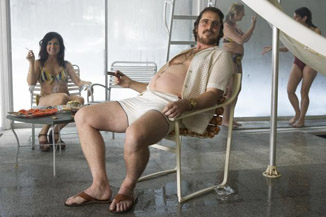They Shoot Oscar Prognosticators, Don't They?
A Primer on Preferential Voting
By J Don Birnam
February 19, 2014
What happens if, in redistributing the ballots of the movie in eighth place, the accountants run into a voter who picked as his or her #2 pick Nebraska, the movie that was eliminated in the first round? In that situation, the accountants go on to the voter’s #3 slot to determine where to place the ballot. Eventually, if the voter ranked all nine nominees, the ballot will go to someone still in the race (if not, the ballot may be discarded and the magic number needed to win adjusted accordingly). In subsequent rounds, it could happen that a voter’s #4 or #5 pick becomes relevant and provides a vote to a movie still in the race. Indeed, in a close year with no clear Best Picture consensus, one can expect the redistribution process to go on for several rounds, making voters’ selections beyond simply the #1 pick incredibly relevant and important.
Hopefully the process is a bit less intimidating now. Understanding it can provide helpful clues to who is going to win this year’s Best Picture race and in subsequent races. If you run the preferential ballot redistribution system in your mind a few times, several truths quickly emerge. First, it is clear that you need a lot of early #1 votes to stay in the race. If you lack those, it does not matter that you may have a lot of #2 votes sitting in piles waiting to be redistributed, because you will likely be eliminated from contention before it can get to that. Remember, the movie with the lowest number of #1 votes gets eliminated first. So, for example, a movie that many people love (say, Nebraska or Philomena) but that does not engender #1 type votes, will be quickly eliminated.
The second thing that becomes clear is that the preferential ballot system many times produces results similar to straight up voting. What it boils down to is still this: what movies do most people like? Eventually, a movie with the right combination of #1 votes to start and high numbers across the other ballots that do not pick it #1 will eventually float up to the top. It sounds simple to the point of stupid to say that all that matters is what movies are most popular, but to see it play out in terms of the preferential ballot process really demystifies the procedure to a great degree.
But here is a corollary and how preferential voting most differs from regular voting: a controversial or divisive movie has no chance to win under preferential voting. Under regular voting, it was theoretically possible for a movie that a lot of people hate to win if it got, say, 250 out of the hypothetical 1,000 votes, if the remaining movies split the field up evenly. In that scenario, a full three-quarters of the Academy may hate a movie and that movie could win anyway. Under preferential voting, that movie needs to climb up to 501, and if it is hated by the three-quarters that did not select it as #1, it will obviously not rank high enough in their ballots to win. Thus, under preferential voting, consensus candidates win - choices that are at least “OK” to at least half the people voting.
Continued:
1
2
3
4




